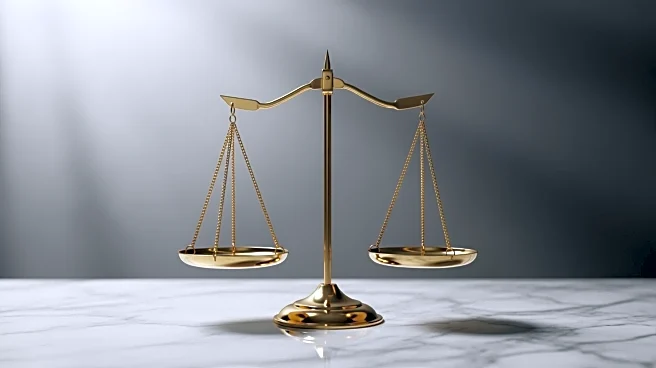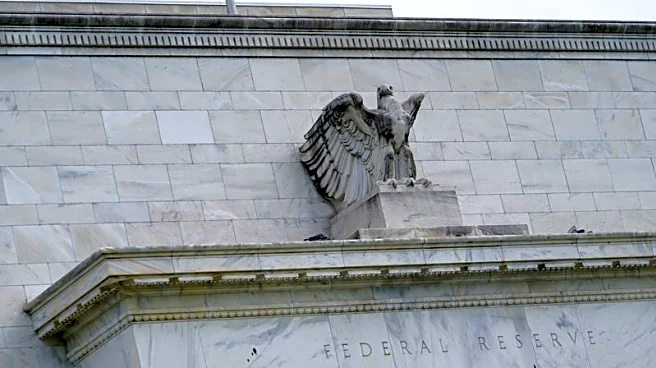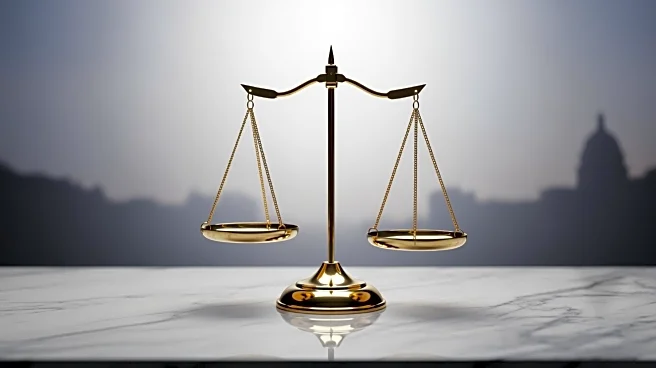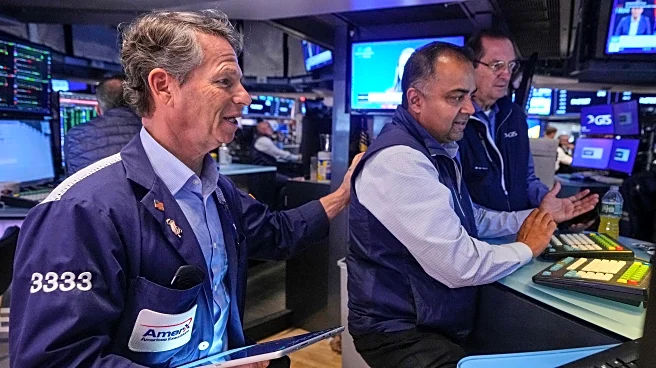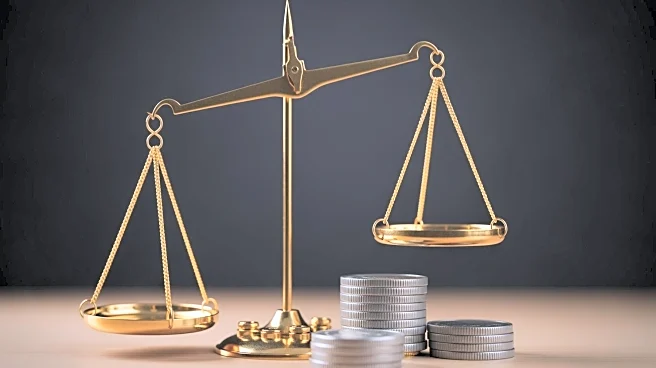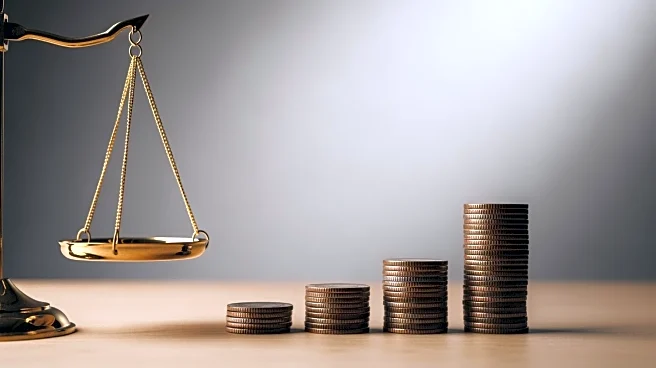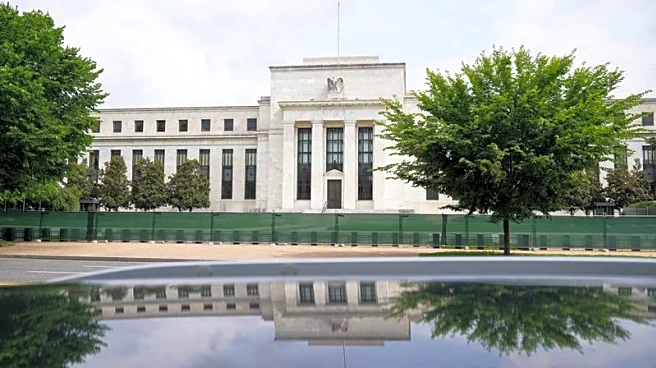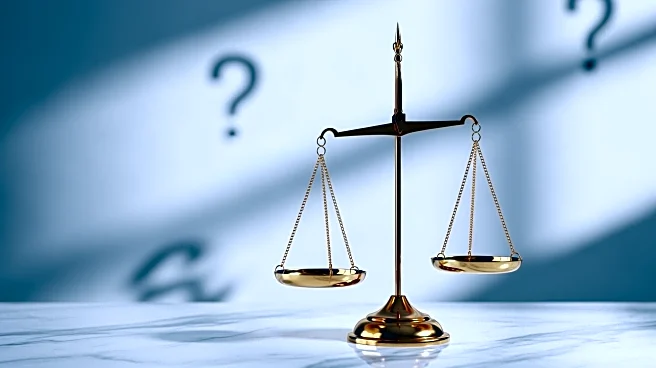What's Happening?
A recent poll conducted by Reuters reveals a shifting outlook among economists regarding U.S. interest rates as the country approaches 2026. The survey indicates that a majority of economists expect the Federal
Reserve to reduce its benchmark interest rate by 25 basis points in October, with a further reduction anticipated in December by 71% of those surveyed. However, beyond these immediate cuts, there is significant divergence in opinions about the future trajectory of interest rates. Economists are divided into seven different projections for the Federal Funds Rate by the end of 2026, ranging from 2.25% to 4%. This uncertainty is compounded by limited economic data due to the ongoing government shutdown in Washington, D.C., and concerns over inflation and labor market weaknesses. Additionally, the future leadership of the Federal Reserve is in question, as current Chair Jerome Powell's term concludes in May next year, with President Trump advocating for more aggressive rate cuts.
Why It's Important?
The potential changes in interest rates hold significant implications for the U.S. economy, affecting everything from consumer borrowing costs to business investment decisions. Lower interest rates typically stimulate economic activity by making borrowing cheaper, which can boost spending and investment. However, there is a risk that excessively low rates could lead to inflationary pressures or asset bubbles. The uncertainty surrounding the Federal Reserve's future leadership and policy direction adds to the complexity, as different approaches to monetary policy could lead to varying economic outcomes. Stakeholders such as businesses, investors, and policymakers are closely monitoring these developments, as the decisions made by the Federal Reserve will influence economic growth, employment, and inflation rates.
What's Next?
As the Federal Reserve prepares for its upcoming meetings, the focus will be on the economic data available and the potential appointment of a new chair. The decisions made in these meetings will be critical in setting the tone for U.S. monetary policy in the coming years. Economists and market participants will be watching for any signals from the Federal Reserve regarding its long-term strategy, especially in light of President Trump's calls for more aggressive rate cuts. The outcome of these discussions will likely impact financial markets and economic forecasts, with potential adjustments in investment strategies and business planning.
Beyond the Headlines
The debate over interest rates also touches on broader economic and political themes, such as the balance between stimulating growth and maintaining financial stability. The Federal Reserve's actions are not only economic decisions but also carry political weight, as they can influence public perception and political agendas. The uncertainty over the Federal Reserve's leadership adds another layer of complexity, as different candidates may prioritize different aspects of monetary policy. This situation underscores the interconnectedness of economic policy, political dynamics, and market reactions.


